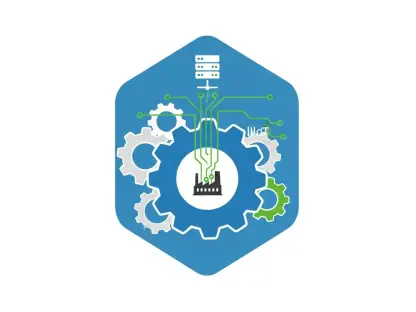In the ever-evolving landscape of cybersecurity, a new and insidious threat has emerged, targeting the backbone of American industry with alarming precision. The ZipLine phishing campaign, a sophisticated operation aimed at U.S. manufacturing firms, has caught the attention of security experts due to its cunning blend of social engineering and custom malware. This attack specifically hones in on supply chain-critical sectors such as machinery, metalwork, and engineered systems, while also extending its reach to hardware, semiconductors, and biotech industries. By exploiting trust and leveraging legitimate business communication channels, this campaign poses a significant risk to operational integrity and economic stability. As cybercriminals refine their tactics to bypass traditional defenses, understanding the mechanisms behind this threat becomes essential for safeguarding vital industries against disruption and financial loss.
Unveiling the ZipLine Phishing Strategy
The ZipLine phishing campaign distinguishes itself through a reversed approach that flips the script on traditional phishing tactics. Rather than blasting out mass emails with suspicious links, attackers initiate contact via a company’s public “Contact Us” web form, instantly lending a veneer of credibility to their outreach. This method allows them to engage in prolonged email exchanges, often spanning weeks, to build rapport with unsuspecting employees. By posing as legitimate business partners and discussing industry-relevant topics, they lower defenses before delivering a malicious ZIP archive hosted on trusted platforms. A recent twist in their strategy includes using an “AI Impact Assessment” theme to capitalize on trending topics, making their bait even more enticing. This patient, calculated approach underscores how attackers weaponize trust, turning routine business interactions into a gateway for cyber intrusion, particularly in manufacturing sectors where operational uptime is critical.
Further delving into the strategy, the campaign’s focus on supply chain-critical industries reveals a deliberate intent to disrupt interconnected ecosystems. Manufacturing firms, often reliant on tight schedules and trusted vendor communications, are especially vulnerable to such tailored attacks. The attackers’ ability to mimic legitimate correspondence means that even vigilant employees might overlook red flags during extended interactions. Once the malicious archive is opened, the infection process begins, exploiting human curiosity or urgency to execute harmful payloads. This methodical exploitation of business workflows highlights a shift in cybercrime, where patience and personalization trump the scattershot methods of yesteryear. For U.S. manufacturing, where a single breach can halt production lines or compromise sensitive designs, the implications are profound, necessitating a reevaluation of how trust is established in digital communications.
Technical Sophistication of the Attack
At the heart of the ZipLine campaign lies a technical prowess that sets it apart from run-of-the-mill phishing attempts. The infection starts when a victim opens a malicious LNK file within a ZIP archive, triggering a PowerShell loader that executes a hidden script. This script establishes persistence through TypeLib hijacking of a Microsoft Web Browser COM object, ensuring the malware remains embedded in the system. The custom MixShell malware, deployed directly into memory, showcases advanced evasion techniques like a unique ROR4 hashing algorithm for API resolution and communication via DNS TXT record queries with HTTP fallback options. With capabilities ranging from file operations to command execution and reverse proxy functions, MixShell poses a versatile threat. A PowerShell variant further enhances stealth with anti-debugging and sandbox evasion features, making detection a daunting challenge for traditional security tools in manufacturing environments.
Beyond the malware itself, the infrastructure supporting the campaign is equally meticulous. Attackers utilize aged domains linked to previously registered U.S.-based LLCs, creating an illusion of legitimacy that helps bypass security filters. These domains often host cloned websites with replicated layouts and stock imagery, designed to deceive even the most cautious recipients. This calculated infrastructure amplifies the campaign’s effectiveness, allowing threat actors to maintain prolonged access and extract valuable data or disrupt operations at will. For manufacturing firms, where intellectual property and production schedules are prime targets, the presence of such persistent and evasive malware can lead to catastrophic breaches. The sophistication of these technical elements signals a need for advanced detection mechanisms and employee training to counteract the evolving methods of cybercriminals targeting industrial sectors.
Evolving Cyberthreats and Industry Impact
The ZipLine campaign exemplifies the broader trend of evolving cybersecurity threats that exploit operational vulnerabilities in high-value industries. By focusing on supply chain-critical manufacturing, attackers aim to create ripple effects that can disrupt entire ecosystems, from production delays to compromised trade secrets. The shift toward patience and customization in phishing tactics marks a departure from indiscriminate, volume-based attacks, reflecting a deeper understanding of business processes by cybercriminals. Security research indicates that such targeted operations are becoming more common, as adversaries adapt to bypass conventional defenses with credible pretexts and prolonged engagement. For U.S. manufacturing, already grappling with digital transformation and interconnected supply chains, this trend amplifies the stakes, turning routine communications into potential minefields of risk that demand heightened scrutiny.
Moreover, the impact on the industry extends beyond immediate financial losses to long-term trust erosion among partners and clients. A successful breach in one firm can cascade through the supply chain, affecting downstream and upstream entities reliant on seamless collaboration. The weaponization of legitimate business workflows, as seen in this campaign, challenges the very foundation of digital trust that modern manufacturing depends upon. As attackers continue to refine their methods, leveraging trending themes and sophisticated malware, the sector faces an uphill battle to stay ahead of threats. This scenario underscores the urgency for industry-wide collaboration on cybersecurity standards, as well as investment in technologies that can detect anomalies in communication patterns. Only through proactive measures can manufacturing firms hope to mitigate the pervasive risks posed by such advanced phishing operations.
Strengthening Defenses Against Future Threats
Reflecting on the ZipLine phishing campaign, it becomes evident that adversaries have mastered the art of blending technical sophistication with psychological manipulation to target critical U.S. industries. Their success in exploiting trust through legitimate channels and deploying stealthy malware like MixShell reveals significant gaps in existing security frameworks. Manufacturing firms, pivotal to national economic stability, find themselves at the forefront of this battle, compelled to adapt swiftly to prevent operational havoc. The lessons learned from these incidents emphasize that traditional email filters and basic training are no longer sufficient against such patient and personalized attacks.
Moving forward, a multi-layered defense strategy emerges as a critical next step for safeguarding the sector. Implementing advanced threat detection systems capable of identifying anomalies in communication patterns offers a robust starting point. Equally important is fostering a culture of skepticism toward unsolicited outreach, even when it appears legitimate, through comprehensive employee training programs. Additionally, collaboration with cybersecurity experts to regularly update protocols and simulate phishing scenarios can fortify resilience. By investing in these proactive measures and sharing intelligence across the industry, manufacturing firms can build a stronger shield against the evolving landscape of cyberthreats, ensuring that trust is no longer a weapon in the hands of attackers.









